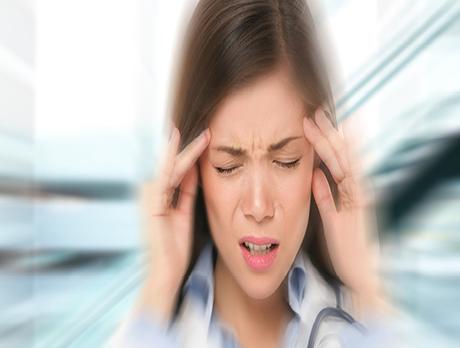Introduction
People are facing so many problems in their day to day life. Due to their stressful working life and personal problems, they are becoming more prone to several diseases. Migraine is also one of them. If they feel pain in the head, they often take it as simple headache, but it can be .
So now the question arises
- Do you know the difference between simple Headache and Migraine?
- Do you know that you are suffering from simple Headache or Migraine?

WHAT IS DIFFERENCE BETWEEN HEADACHE AND MIGRAINE
Here I am going to tell you the difference between usual headache and Migraine. Headache mainly involves pain in head, but can involve face and neck muscles also, pain is not of severe type but Migraine mainly involves pain on the front of the head and one side of the head and it is characterized by severe, throbbing pain. Sometimes Migraine can be associated with nausea, vomiting, pain and burning in the eyes. People often do not take medicine for it and they avoid it.
CAUSES FOR MIGRAINE
What causes Migraine, this is very necessary to know.
Migraine mainly arisen when there is excessive stimulation of brain and blood vessels. It can occur due to a single factor or due to a combination of various factors.
ACCORDING TO AYURVEDA (SOORYAVARTA)
Sooryavarta means throbbing pain on one side of the head. It can arise due to a variety of causes which can -
- Stressful life
- Disturbed emotional life
- Unhygienic food
- Long time exposure to sunlight
- Too much salty and spicy food
- Any digestion problem
- Aggravates Pitta doshas
- Obstructs the vata doshas in brain
- Leads to pain on one side of the head (Sooryavarta)
AYURVEDIC PERSPECTIVE OF MIGRAINE

Reference - Bhavprakash Chikitsaprakranam/ Chapter 62/Shlok no. 17 and 18
Meaning - It states that having dry food, again and again taking food, , excessive sex, walking and excessive weight lifting, affects our head and results in vitiated kapha which leads to pain on half side of head, eye brows, temporal region of head, ear, eye and half side of the forehead. This condition in Ayurveda is called Ardhavibhedhak. When this condition aggravates, it can lead to eye and ear damage.
TRIGGERING FACTORS FOR MIGRAINE

Triggering factors are those factors which initiate the condition, means the presence of those conditions, progresses the symptoms.
Triggering factors for migraine can be as follow
CLINICAL FEATURES FOR MIGRAINE
Migraine can sometimes be present with signs and symptoms and they can vary from person to person.
Migraine symptoms can be
1. Pain - Pain is mainly felt in the front side of the head and on one side of the head. Pain mainly occurs on the half side of the head. Pain is very severe, throbbing and aggravates on exposure to light.
2. Other symptoms - Pain can be sometimes associated with nausea, vomiting, blurred vision, mild confusion and sensitivity to light.

TYPES OF MIGRAINE
Migraine can be of various types, depending upon its symptoms. It can be -
WHAT IS AURA - Aura are mainly sensory disturbances which are felt during or before the Migraine attack.
1. MIGRAINE WITHOUT AURA - In this type of migraine,attack comes without any sensory disturbance.
2. MIGRAINE WITH AURA - In this type of migraine the person feels warning signals before the attack of migraine which tell him that soon he is going to get a migraine attack.
These warning signs can be
- Confusion
- Zig-zag lines in front of eyes
- Difficulty in speaking
- Blind spots in the vision
3. ABDOMINAL MIGRAINE - In this type of Migraine, Migraine attacks occur along with bowel disturbances. It is mainly seen in children.
4. HEMIPLEGIC MIGRAINE - Hemi stands for half and Plegic stands for weakness. In this type of Migraine weakness is felt on one side of the body. It is for short duration.
DIAGNOSIS OF THE MIGRAINE
Diagnosis mainly depends upon the signs and symptoms of the patient. Accurate diagnosis is must for the treatment which mainly depends upon the clinical features of the patient. Along with that some other tests can be done to confirm the diagnosis.
These tests can be
HOW MIGRAINE CAN BE MANAGED AT HOME
Migraine can be very serious if not treated on time. If we take pain killers, it can result in various complications due to its side effects. So to manage it, first of all try to remove all those factors which trigger the attack, some preventive measures can be taken and some home remedies can also be followed to decrease its signs and symptoms.
Management includes
- Remove the trigger factors
- Non medication measures
- Home remedies
1. Remove the trigger factors
Following trigger factors should be avoided
- Avoid citrus fruits, plum, spicy food, pickle, fast-food and cheese in your diet because it can aggravate the condition.
- Avoid excessive exposure to light
- Avoid alcohol, tea and coffee
- Avoid stress, depression and anxiety
- Avoid excessive noisy places
2. Non medication measures
Some lifestyle changes can be adapted.
They can be
- Drink plenty of water, you can also take tea
- During a Migraine attack sit in the room alone and try to sleep
- Regular exercising, Yoga or Aasanas can be followed
- Meditation can be done
- Follow stress management techniques
- Take diet excluding triggering factors
3. HOME REMEDIES
Certain home remedies can be followed which can be very helpful in migraine.
These home remedies can be
A. Asafetida - Take water and add asafetida powder in it, mix it well, Either inhale it or you can apply this paste over your head. It will help in relieving its symptoms.
B. Garlic - Make a paste of garlic and apply it over your head or you can instil the garlic juice in your both nostrils.
C. Lemon - Make a paste of the lemon peel and apply it over your head. It will be very helpful.
D. Cabbage - Make a paste of cabbage leaves and apply it over your head. It will be beneficial.
E. Saffron - Saffron has been proved to be very useful in Migraine. It gives very good results in treating Migraine. Take one pinch of Saffron powder and mix it with one teaspoon of Ghee, resultant mixture should be instilled in both the nostrils. This gives good results.
F. Sesame oil/ Maha Narayana tail- Facial massage should be done with plain sesame oil. After that soak a towel in a little hot water and apply it on your face. This herbal remedy is also very useful.
G. Coriander - Take one cup of water and add one spoon coriander powder in it. Keep it for the whole night and take this mixture on the next morning. This mixture gives good results.
H. Raisins and Almonds - Soak some r aisins and almonds in the night and take it in the morning.
I. Jasmine and Pomegranate juice - Take tender leaves of jasmine and pomegranate, add little salt to it and prepare fresh juices after crushing it. This mixture can be instilled in both the nostrils. This helps in relieving migraine.
J. Doorva grass (Cynodan dactylon) - Prepare the fresh juice using Doorva grass and add little licorice water to it and consume this solution regularly. It helps in reducing severity of the disease.
CONCLUSION
Although Migraine is a Benign condition and you no need to worry about it due to its rare chances to leading to death, but its proper treatment is needed and taking painkillers in routine can lead to severe complications, because excessive consumption of painkillers may damage our body organs. So avoid to take painkillers and try to follow these home remedies.

